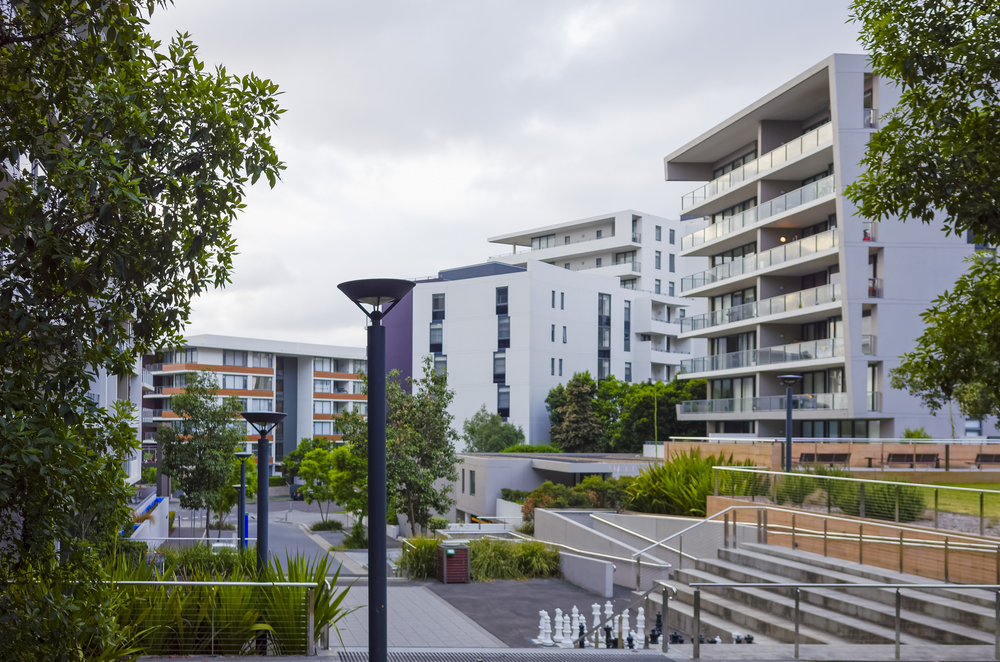Considering a Bathroom Remodel? Read This First.
Reasons to preserve the colourful fixtures and quality tiles of the 1920s to the 1960s.
THIS MONTH I finally got to realise a lifelong dream: to spend some quality time in my friend Joan’s exquisite bathroom.
Joan’s bathroom was not one of those modern, faux-California spas with a Japanese soaking tub, an infinity-edge sink and a toilet so smart it could do the crossword puzzle for you.
Instead, the bathroom in her prewar apartment on the Upper West Side of Manhattan had an old-fashioned pedestal sink, black-and-white floor tile and a white marble bathtub—circa 1912—in which you could comfortably execute a dead man’s float.
In other words, Joan’s lavatory was a museum-quality example of why you should do your best to preserve original, classic décor. Or it was, until my husband emerged from this historical sanctuary one afternoon clutching the remnants of a polished-nickel toilet paper holder.
“It just fell off the wall,” he said, stricken. He cradled the broken, swing-arm paper holder as if it were a dead sparrow. “It wasn’t my fault.”
“Maybe we could hide it under the bed,” I said.
“I can probably fix it,” he replied, and wandered off to Google “Can you glue vintage polished nickel?”
I adore well-preserved 20th-century bathrooms, but sadly, they are an endangered species. As they age, they develop problems. Tile cracks. Grout molds. Chrome pits. Midcentury toilets in splendid colors like “Mamie Eisenhower pink” leak. Toilet paper holders fall off the wall. Most new homeowners won’t wait for fixtures to fail; the bathroom is often the first to go.
It’s a shame, because every time that happens we lose a little bit of our collective history, not to mention quality bathroom time.
As I called around in search of insights into our TP-holder dilemma, I discovered other vintage lav lovers like me.
“When my realtor and I walked into this 1956 house with an original, pink bathroom, he said, ‘Of course, you’ll want to rip all this out.’ I decided right there I wanted to buy the house—to save that bathroom,” said Sarah Smith of Burgaw, N.C. “The idea of someone tearing it all out broke my heart.”
Ms. Smith, who bought her home a few months ago, said the bathroom was in such great shape it seemed unused. Best of all? There was another pristine vintage bathroom in baby blue.
There are apparently enough people like me and Joan and Ms. Smith to support a thriving business, called This Old Toilet, in Los Altos, Calif. Gary Tjader, who launched the company in 2003, sells both replacement and reproduction toilet seats, tanks, lids and other parts. The venture was a pivot from his grandfather’s wholesale plumbing supply business, founded in 1933.
Aficionados of antique toilets are not rare. “I get calls all the time from people looking for old toilets,” Mr. Tjader said. “But I tell them they’re hard to find.” As we chatted, I realized my friend’s vintage toilet-roll-holder wouldn’t be easily replaced.
“It’s pretty hard to find an exact match, especially if you’re chasing a particular color or brand,” Mr. Tjader mused. He added, “Every metropolitan area has a salvage yard somewhere, and you can go hunting.”
I tried another source for vintage bathroom fixtures and accessories: Retro Renovation, a website run by midcentury design enthusiast Pam Kueber, which offers advice to homeowners who want to remodel in a style authentic to the original. Articles on the website cover such topics as where to buy retro-colored wall and floor tile (including 34 sources), terrazzo shower pans and Formica countertops.
One of Ms. Kueber’s passions is a quest to preserve pink loos, pursued via a website called Save the Pink Bathrooms. There, one can read about this rampant midcentury trend, which began when Mamie Eisenhower put a pink pissoir in her Gettysburg, Penn., home. “Her bathroom was pink down to the cotton balls,” Ms. Kueber wrote on the website. “She redecorated the private quarters in the White House in pink.”
If only I were looking for a pink paper holder. “What if you can’t find original, vintage replacement parts for a bathroom?” I asked.
“You can find new things that will re-create the style of the era,” said Ms. Kueber. “The important thing, if you have an architectural jewel of a vintage house, is to stick with the original style.”
Interior designer Madeline Stuart specializes in bathroom remodels in Los Angeles that replicate the style of the era when a house was built. “Anyone can remodel and do a Four Seasons bathroom in beige travertine and limestone, but I like doing something a little more fun. I like to tile a bathroom in pink and black. Also purple and black.”
Her favorite techniques for re-creating a period look? “Super, super tight grout joints between tiles,” she said. “Hexagonal tile on the floor. Also, arched shower doorways or a tub set into a niche creates a very period look.”
In Ms. Stuart’s own 1930s Spanish Revival house she has two original bathrooms. “In one,” she said, “the pedestal sink is dusty pink, and it’s only 30 inches high, so my husband, who is six foot four, has to fold himself in half to use it, and there’s not a single electrical plug because there was nothing to plug in in the 1930s. I guarantee the person I someday sell the house to will rip out those bathrooms first thing. But I don’t have the heart to do it.”
While I was talking to Ms. Stuart, I saw my husband walk past with a tube of glue—he had just returned from a hardware store—and head into the bathroom.
A few minutes later, he emerged triumphant. “I think it’s going to hold,” he said.
He was right. The solution worked so well that a couple of days later I felt confident enough to confess everything to Joan.
She laughed.
“That’s a new toilet paper holder,” she said. “When I redid the bathroom, I tried to be true to the spirit of the building. But the only thing in the bathroom that is original is the tub.”I have to confess. This made me a little sad. On the other hand, I’m really glad we didn’t break the bathtub.
Reprinted by permission of The Wall Street Journal, Copyright 2021 Dow Jones & Company. Inc. All Rights Reserved Worldwide. Original date of publication: August 17
 Copyright 2020, Dow Jones & Company, Inc. All Rights Reserved Worldwide. LEARN MORE
Copyright 2020, Dow Jones & Company, Inc. All Rights Reserved Worldwide. LEARN MORE
This stylish family home combines a classic palette and finishes with a flexible floorplan
Just 55 minutes from Sydney, make this your creative getaway located in the majestic Hawkesbury region.
A Sydney site with a questionable past is reborn as a luxe residential environment ideal for indulging in dining out
Long-term Sydney residents always had handful of not-so-glamourous nicknames for the building on the corner of Cleveland and Baptist Streets straddling Redfern and Surry Hills, but after a modern rebirth that’s all changed.
Once known as “Murder Mall” or “Methadone Mall”, the 1960s-built Surry Hills Shopping Centre was a magnet for colourful characters and questionable behaviour. Today, however, a $500 million facelift of the site — alongside a slow and steady gentrification of the two neighbouring suburbs — the prime corner property has been transformed into a luxury apartment complex Surry Hills Village by developer Toga Group.
The crowning feature of the 122-apartment project is the three-bedroom penthouse, fully completed and just released to market with a $7.5 million price guide.
Measuring 211sqm of internal space, with a 136sqm terrace complete with landscaping, the penthouse is the brand new brainchild of Surry Hills local Adam Haddow, director of architecture at award-winning firm SJB.
Victoria Judge, senior associate and co-interior design lead at SJB says Surry Hills Village sets a new residential benchmark for the southern end of Surry Hills.
“The residential offering is well-appointed, confident, luxe and bohemian. Smart enough to know what makes good living, and cool enough to hold its own amongst design-centric Surry Hills.”
Allan Vidor, managing director of Toga Group, adds that the penthouse is the quintessential jewel in the crown of Surry Hills Village.
“Bringing together a distinct design that draws on the beauty and vibrancy of Sydney; grand spaces and the finest finishes across a significant footprint, located only a stone’s throw away from the exciting cultural hub of Crown St and Surry Hills.”
Created to maximise views of the city skyline and parkland, the top floor apartment has a practical layout including a wide private lobby leading to the main living room, a sleek kitchen featuring Pietra Verde marble and a concealed butler’s pantry Sub-Zero Wolf appliances, full-height Aspen elm joinery panels hiding storage throughout, flamed Saville stone flooring, a powder room, and two car spaces with a personal EV.
All three bedrooms have large wardrobes and ensuites with bathrooms fittings such as freestanding baths, artisan penny tiles, emerald marble surfaces and brushed-nickel accents.
Additional features of the entertainer’s home include leather-bound joinery doors opening to a full wet bar with Sub-Zero wine fridge and Sub-Zero Wolf barbecue.
The Surry Hills Village precinct will open in stages until autumn next year and once complete, Wunderlich Lane will be home to a collection of 25 restaurants and bars plus wellness and boutique retail. The EVE Hotel Sydney will open later in 2024, offering guests an immersive experience in the precinct’s art, culture, and culinary offerings.
The Surry Hills Village penthouse on Baptist is now finished and ready to move into with marketing through Toga Group and inquiries to 1800 554 556.
This stylish family home combines a classic palette and finishes with a flexible floorplan
Just 55 minutes from Sydney, make this your creative getaway located in the majestic Hawkesbury region.



























